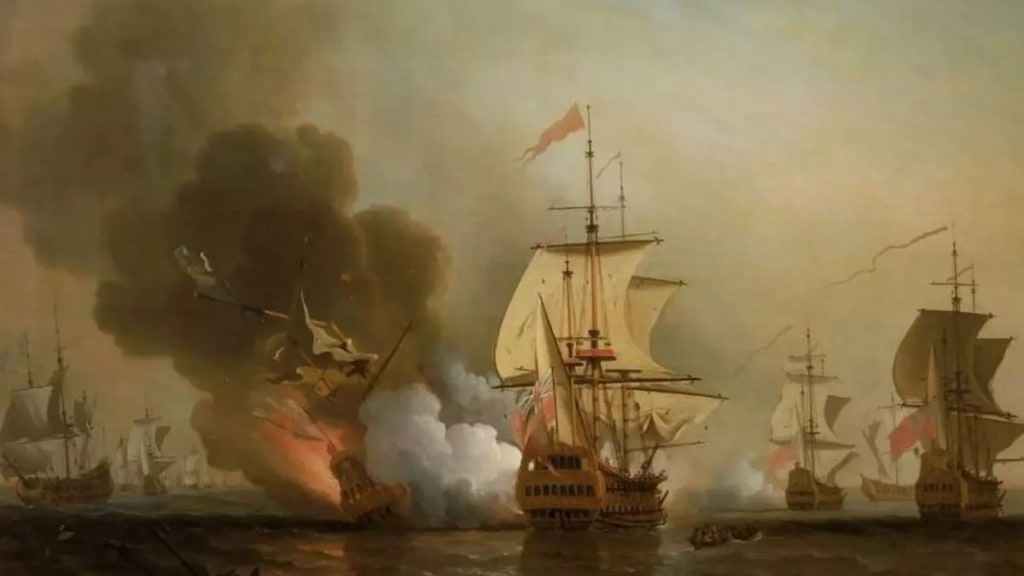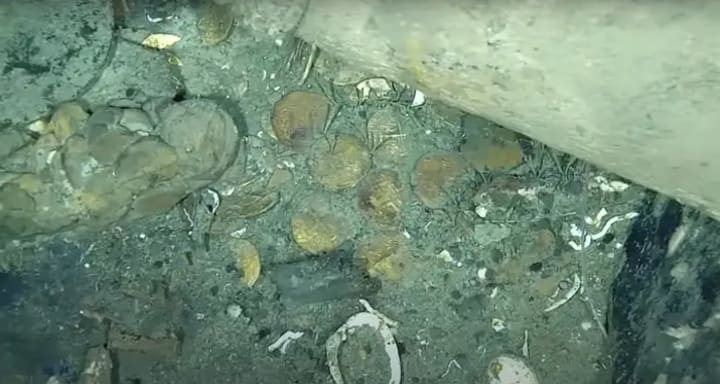The Sunken Treasure Ship San José
A Legacy of Riches and Controversy

Introduction
In the depths of the Caribbean Sea, off the coast of Colombia, lies a sunken treasure ship that has captured the imagination of historians, treasure hunters, and legal experts for centuries. The San José, a Spanish galleon laden with a vast fortune in gold, silver, and emeralds, met its watery fate in 1708 during a fierce battle with British forces. Its exact location remained a mystery for over 300 years until its discovery in 2015 ignited a global debate over ownership rights and the preservation of maritime heritage.
The Historical Significance of the San José
The San José was a part of the Spanish treasure fleet, a convoy system adopted by the Spanish Empire from the 16th to the 18th century. The fleet was designed to transport wealth from the Spanish colonies in the New World to Spain. The San José, built in 1698, was one of the largest and most opulent galleons of its time. It was often referred to as the “pride of the Spanish navy.”
On June 8, 1708, during the War of Spanish Succession, the San José was engaged in a fierce battle with the British navy. Laden with gold, silver, and emeralds from the mines of Peru, it was a tempting target for the British forces. Despite putting up a valiant fight, the San José was fatally damaged and sank, taking its crew and the immense treasure down with it.

The Discovery of the San José
The exact location of the San José remained a mystery for over 300 years. Many expeditions were launched to find the ship, but all proved unsuccessful. The breakthrough came in 2015 when the Colombian government, in partnership with the Maritime Archaeology Consultants Switzerland AG and the Woods Hole Oceanographic Institution, discovered the wreck off the coast of Cartagena.
The discovery was made possible by advancements in underwater exploration technology. Using autonomous underwater vehicles and advanced sonar systems, the team was able to locate and identify the San José. The discovery was hailed as one of the most significant maritime archaeological finds in history.
The Treasure of the San José
The San José was carrying a vast fortune when it sank. It is estimated that the ship was carrying six to seven million pesos of gold, silver, and emeralds. In today’s terms, the value of the treasure is estimated to be between $4 billion and $17 billion, making it the most valuable shipwreck ever discovered.
The treasure of the San José is not just valuable in monetary terms. It also holds immense historical and cultural significance. The artefacts recovered from the ship provide a glimpse into the economic and political dynamics of the early 18th century. They shed light on the global trade networks of the time and the geopolitical conflicts that shaped the modern world.

The Controversy Surrounding the San José
The discovery of the San José sparked a global debate over ownership rights and the preservation of maritime heritage. The Colombian government claimed ownership of the ship and its treasure, citing the United Nations Educational, Scientific and Cultural Organization (UNESCO) Convention on the Protection of underwater cultural heritage. However, this claim has been contested by several parties.
Sea Search Armada (SSA), a U.S.-based salvage company, claimed that they had located the wreck in 1981 and had an agreement with the Colombian government to split any recovered treasure. However, the Colombian government disputed this claim, leading to a protracted legal battle.
Spain also laid claim to the treasure, arguing that the ship was a state-owned vessel at the time of its sinking. The descendants of the families who had originally sent the treasure on the San José have also staked a claim.
The Future of the San José
The future of the San José and its treasure remains uncertain. The Colombian government has expressed its intention to build a museum and world-class conservation laboratory to preserve and publicly display the wreck’s contents. However, the ongoing legal disputes and the technical challenges of raising and conserving the artefacts pose significant hurdles.
The case of the San José highlights the complex issues surrounding the discovery and salvage of historic shipwrecks. It raises important questions about the ownership and preservation of our shared maritime heritage and serves as a reminder of the rich and often contentious history that lies beneath the waves.
Conclusion
The San José, often referred to as the “Holy Grail of Shipwrecks,” continues to captivate the world with its story of riches, warfare, and controversy. Its discovery has ignited debates about ownership and preservation, and its treasure continues to be a symbol of the immense wealth that flowed from the New World to Europe during the colonial era. As we delve deeper into the ocean’s depths and uncover more of our submerged history, the legacy of the San José serves as a poignant reminder of the complex and often contentious relationship between the past and the present.
About the Creator
Richard Clements
Unearthing the Mysteries of History, Crime, and the Unknown
Delve into the captivating world of history, crime, and mystery through factual writing. Explore the past, unravel human behavior, and solve enigmas.
Enjoyed the story? Support the Creator.
Subscribe for free to receive all their stories in your feed. You could also pledge your support or give them a one-off tip, letting them know you appreciate their work.






Comments
There are no comments for this story
Be the first to respond and start the conversation.